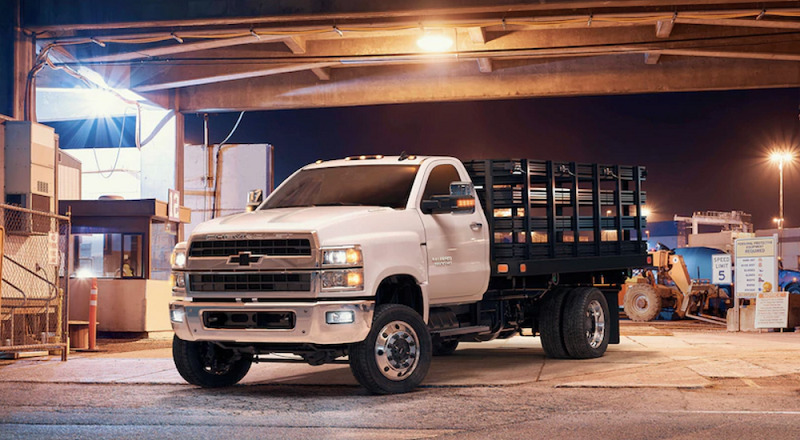Motor vehicle safety is imperative to prevent accidents involving both drivers, passengers, and other road users. However, did you know that according to the Bureau of Labor Statistics, in 2018, 2,080 deaths were recorded as a direct result of occupational transport incidents?
In this blog post, we will look at some OSHA driving safety regulations and what can be done to comply with these important rules.
Remember, it’s not just about following the law – it’s also about keeping all employees safe!

What OSHA Driving Safety Regulations Should I Know as an Employer?
You as an employer should know various general requirements and ensure workers’ occupational safety and health when operating vehicles at off-highway workplaces.
While employees are responsible for driving motor vehicles safely, it’s the employer’s responsibility to enforce safe driving.
The following occupational safety regulations should be maintained at all times. If a motor vehicle can tick all of these boxes except just one – it may not be occupied. Letting even one small thing slide can be a serious occupational safety and health hazard.
You need to regularly perform checks and inspections on every motor vehicle to ensure its safety for your employees.
Here are some very important OSHA driving safety regulations for employers to know:
- Vehicles must have all three: a working service brake system, an emergency brake system, and a parking brake system.
- All motor vehicles must be equipped with working brake lights.
- Motor vehicles operating in poor light conditions must be equipped with at least two headlights and two tail lights.
- An adequate audible warning device must be installed at the operator’s station of a machine in a manner that is easy to use and access.
- No motor vehicles may be operated without an unobstructed rear view unless an observer is present to guide them.
- Windshields should have powered wipers, glass should have no cracks, and vehicles operating in misty or foggy conditions should have working defogging and defrosting devices.
- Seat belts for the driver and passengers should be operational.
What Motor Vehicle Safety Regulations Should Employees Know?
Employees require proper training to determine whether all of the measures mentioned above have been put into place and are still functioning correctly.
Section number 1926.601(b)(14) states: “All vehicles in use shall be checked at the beginning of each shift to assure that the parts, equipment, and accessories are in safe operating condition and free of apparent damage that could cause failure while in use.”
Findings should be communicated to employers so that they can rectify safety hazards or regulation violations. Until such a time that they have been fixed, the motor vehicle should not be in operation.
Other regulations employees are required to know for the sake of their own occupational safety and health include:
- If visibility is poor, they must make use of headlights and taillights. This is not only so that the driver can see, but so that the vehicle can be seen.
- The number of passengers should not exceed the number of seat belts. Every passenger (and the driver) should have a working seat belt that they wear for the full duration of the ride.
- Drivers should note any traffic signs, such as those indicating speed limits (and comply with them) or pedestrians.
- No motor vehicle should be left unattended with its engine running.
- Drivers should keep potentially distracting activities to an absolute minimum, such as eating or drinking, particularly cellphone use.

How Insure Compliance Helps with Motor Vehicle Safety
At Insure Compliance, we have developed a unique model that identifies five safety gaps and provides tried and tested solutions. These include:
- Awareness gap - understand what you, as a company, are required to do to protect your employees when operating motor vehicles
- Process gap - expressly detail the proper and safest way to operate motor vehicles with documentation of your motor vehicle safety policies
- Knowledge gap - reinforce and apply training for all employees, contractors and relevant stakeholders when it comes to motor vehicle safety
- Verification gap - visit the workplace, engage with employees, inspect the behavior, and
- Accountability gap - keep employees accountable for behavior that does not meet your workplace motor vehicle safety policies.
In this case, we will discuss the verification gap.
We have defined the verification gap as the difference between the safety training provided and the safety behavior.
Unfortunately, negligence and laziness play a big part in occupational safety when operating a motor vehicle.
So, the best way to curb this is adequate staff training. At Insure Compliance, we don’t just focus on the how but also on the why.
Once employees understand why they are doing certain motor vehicle safety checks every single day, over and over, the task will seem less monotonous or mundane, as they realize that it is for their own occupational safety, as well as that of their peers.
But, it’s not only the employees who need training. Sometimes business owners are more focused on profits and productivity than motor vehicle safety.
Employers often don’t allow workers adequate time to perform their motor vehicle checks before operation. Safety and health risks are sometimes overlooked if an employee indicates an irregularity with a motor vehicle to the authorities, but it’s too expensive to fix.
So, to bridge the verification gap, we provide training to help both sides. There need to be structures put in place to recognize safety as a company goal, with mutual safety supervision.
Employers should regularly monitor whether employees are doing the correct checks. And, employers should be held accountable to fix any irregularities with absolute haste – and disallow the motor vehicle from being used until it’s fully compliant once more.
Key Takeaways
Your workplace might be operating vehicles that risk employees’ occupational safety and health every day without even realizing it. Or, they are completely aware and may not have the proactiveness to address this.
Give both yourself and your employees a fresh outlook by making use of our training services. We come to your worksite and offer both English and Spanish options.
Implementing all the necessary safety checks will not only drastically reduce your chance of hefty fines should OSHA regulators come around, but knowing that all vehicles are in safe, functioning order provides a great sense of peace of mind and community.
Get in touch with us today, and we can start the process of bridging that gap.
Disclaimer:
Please note that every effort has been made to ensure that the information provided in this guide is accurate. You should note, however, that the information is intended as a guide only, providing an overview of general information available to property buyers and investors. This guide is not intended to be an exhaustive source of information and should not be seen to constitute legal, tax or investment advice. You should, where necessary, seek your own advice for any legal, tax or investment issues raised in your affairs.








4 Responses
Thanks for explaining that gap insurance is also important to consider when it comes to OSHA training. I’m interested in learning more about OSHA standards because I’m interested in starting a material supplying company someday. As such, that business will require delivery drivers later down the line.
Thanks Alice! I would love to talk with you more about this. It is so important that we are willing to protect employees from the get go.
What is allow driving hours per day contentious or consecutive according to OSHA?
They will refer this to DOT. But I can help with some more specific answers if you need it!
Thanks,
Nat